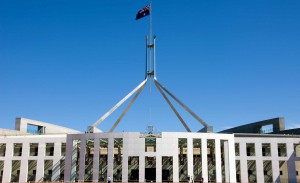During the recent election campaign the Coalition promised to help 10,00 First Home Buyers get into the property market by topping up their 5% deposit with the government guarantee for 15% of the loan they would be taking out.
In essence this support for those looking to buy their first home offers an additional loan facility to first-home buyers to fund the gap between their deposit savings and the 20 per cent deposit required by most lenders.
The scheme will mean first-home buyers who can’t save a 20 per cent deposit may avoid the additional expense of around $10,000 for lenders’ mortgage insurance, which protects banks in case borrowers default on their mortgages.
If legislation is passed, the scheme will start on January 1, 2020
Who can get this?
Single people earning up to $125,000 or couples earning up to $200,000 will be eligible for the first-home loan deposit scheme if they have saved 5% of the value of the home.
The government will set aside $500million of equity through the National HousingFinance and Investment Corporation to guarantee loans up to a value of 20% of the home.
The government will underwrite the home loans and serve as the guarantor.
The value of homes that can be purchased under the scheme will be determined on a regional basis, reflecting differing property markets.
How long does the guarantee last?
Once a first homebuyer has borrowed 95% of the value of the property, the government guarantee lasts for the life of the loan or until their mortgage is refinanced.
Is it risky for the government?
This policy is not “free money” or cash back like a First Home Owner's Grant and the banks will still do all the normal checks on the borrowers to make sure they can meet their repayments.
Will this put the Government's money (which is really our money) at risk?
Grattan Institute housing expert Brendan Coates told Guardian Australia in the event of a default the bank would need to get its money before the government otherwise “they can’t treat it as a government-guaranteed deposit”.
Coates suggested the government is “opening itself up to quite a lot of risk, especially in a falling market”.
Will the scheme work?
In my mind, this was a Federal election political ploy which will not have a profound impact on our property markets.
Sure it will make a difference by cutting the time to save for a deposit considerably.
But being limited to 10,000 first home buyers, which is less than 10% all first home buyers each year and it will not affect homeownership rates greatly, if anything it will just bring forward a small group of buyers who could afford a home anyway as they will still need to make their lenders confident that they can afford a home mortgage rate for the full amount.
Undoubtedly, some borrowers will get themselves into trouble as entering into a 30 year mortgage with a wafer thin deposit will mean these borrowers will need to pay “thousands" more in interest to their banks over the life of the loan.
According to RateCity’s calculations, buying a $500,000 property with a 5% deposit instead of 20% will cost an extra $58,774 over the life of a 30-year loan.
RateCity research director Sally Tindall said “APRA [Australian Prudential Regulation Authority] has spent the last four years telling the banks to be cautious of lending to Australians with low deposits. Now the major political parties are actively encouraging it.”

















